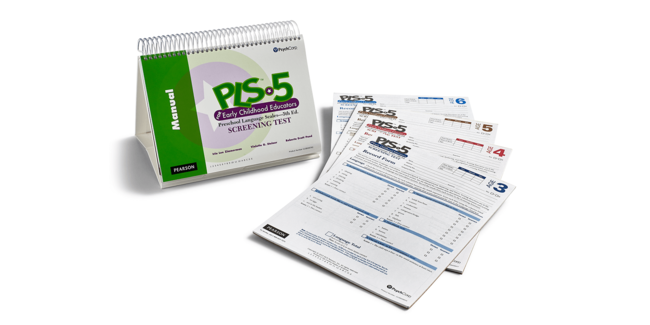Preschool Language Scales-5 Screening Test PLS™-5 Screening Test screens a broad spectrum of speech and language skills for children birth through age 7.
Preschool Language Scales-5 Screening Test
PLS-5 Screening Test
Preschool Language Scales-5 Screening Test PLS™-5 Screening Test screens a broad spectrum of speech and language skills for children birth through age 7.Choose from our formats
Kits
Starter & complete kits, print & digital
1 option
Test forms & reports
Booklets, record forms, answer sheets, report usages & subscriptions
8 options
Support materials
Manuals, stimulus books, replacement items & other materials
1 option
All products
All tests & materials offered for PLS-5 Screening Test
10 options
